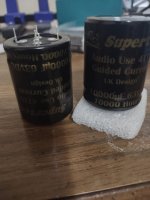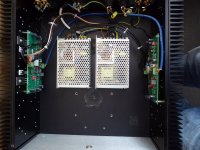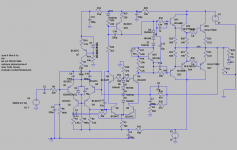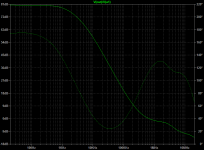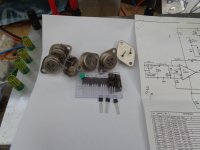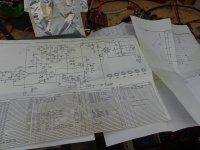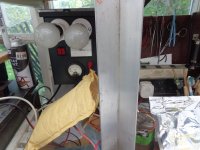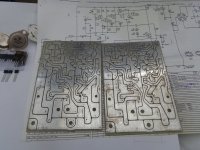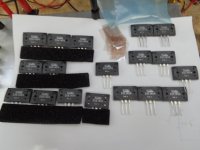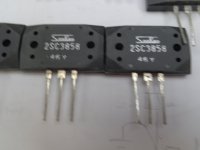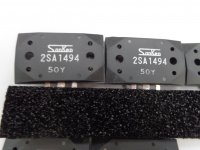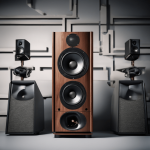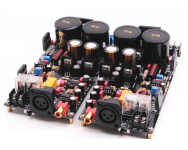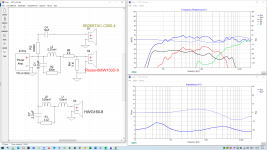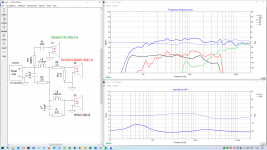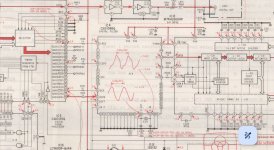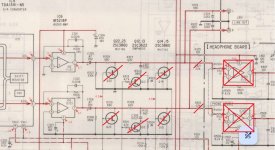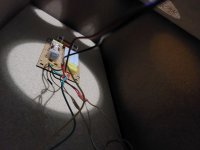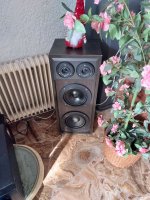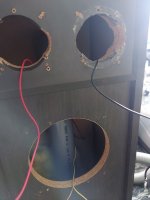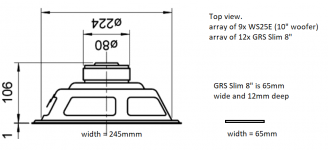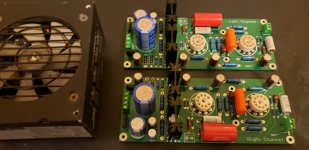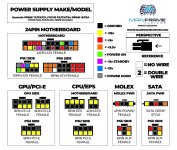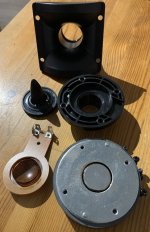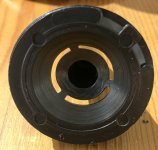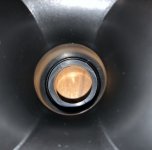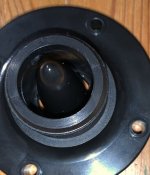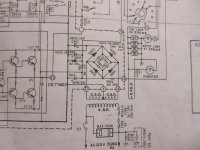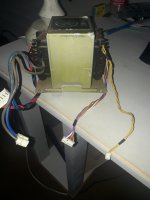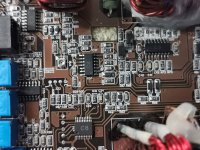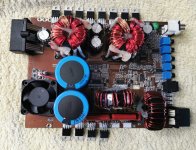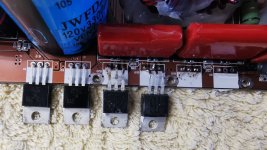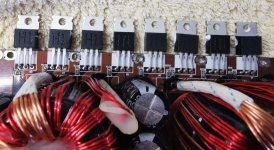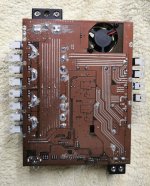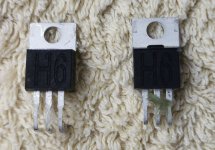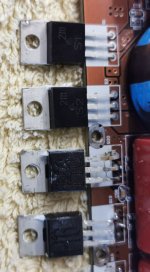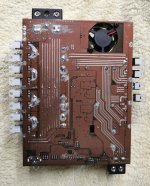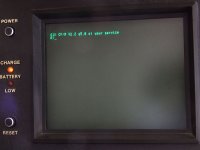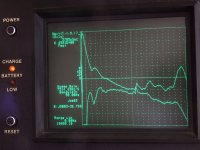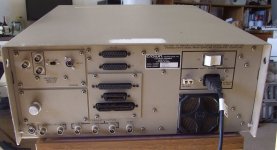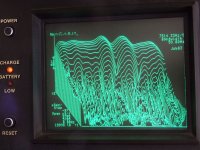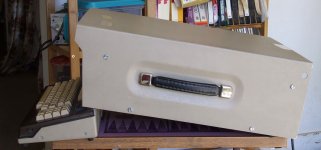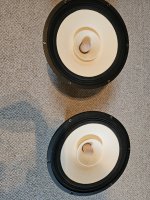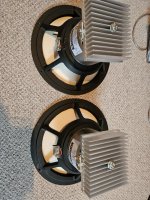Hi
I'm having a go at repairing an Adcom GFA-2535, its a 4 channel amp. 2 channels per board. I have the service manual for it. Amplifier A if working correctly, and sounds pretty good, just needed minor bias adjustment. Not new to DIY, very good with a soldering iron and have a few audio projects done. I thought I'd try understanding the circuit and how it works.
Amplifier B, looked like it had come liquid spilt onto it, very dirty, and first thing I did was clean it up a bit

Just clean water, toothbrush, qtips and blew off excess water

Here's the schematic of the one half of the board, I've highlighted the components that tested faulty from my basic understanding

Started diagnosing what was wrong and I've found the following:
1. Both fuses F601 and F602 blown
2. Q625 = 2SA1507 - Short between Collector and Emitter, no short between Collector and Base
3. Q633 = 2SB817D - Short between Base, Collector and Emitter
4. Q629 = 2SB817D - Short between Base, Collector and Emitter
6. D607 = DSC30TC - Shorted
I'm in the process of ordering parts, have some questions
Do I need to replaced the complementary devices for Q625, Q633, Q629 as well?
For D607, should I replace D605 as well if I cant find an exact part match?
For D607, here is the original spec

Mouser has a SR315 in stock. In this position in the circuit, can I use a 1N5822? What does D607 / D605 do?

Any guesses as to what else upstream could be blown based on the info here, would like to get all the parts in one order if possible.
Thanks in advance, looking forward to reviving this board. Have an oscilloscope and function generator to help with troubleshooting after new parts are installed. Looking at getting a transistor tester from Amazon, any recommendations?

